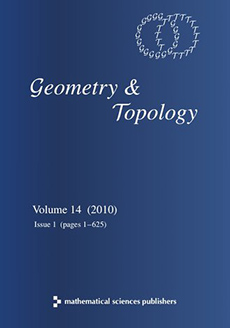Abstract
We call a finitely generated group lacunary hyperbolic if one of its asymptotic cones is an –tree. We characterize lacunary hyperbolic groups as direct limits of Gromov hyperbolic groups satisfying certain restrictions on the hyperbolicity constants and injectivity radii. Using central extensions of lacunary hyperbolic groups, we solve a problem of Gromov by constructing a group whose asymptotic cone has countable but nontrivial fundamental group (in fact is homeomorphic to the direct product of a tree and a circle, so ). We show that the class of lacunary hyperbolic groups contains non–virtually cyclic elementary amenable groups, groups with all proper subgroups cyclic (Tarski monsters) and torsion groups. We show that Tarski monsters and torsion groups can have so-called graded small cancellation presentations, in which case we prove that all their asymptotic cones are hyperbolic and locally isometric to trees. This allows us to solve two problems of Druţu and Sapir and a problem of Kleiner about groups with cut points in their asymptotic cones. We also construct a finitely generated group whose divergence function is not linear but is arbitrarily close to being linear. This answers a question of Behrstock.
Citation
Alexander Yu Ol’shanskii. Denis V Osin. Mark V Sapir. "Lacunary hyperbolic groups." Geom. Topol. 13 (4) 2051 - 2140, 2009. https://doi.org/10.2140/gt.2009.13.2051
Information





